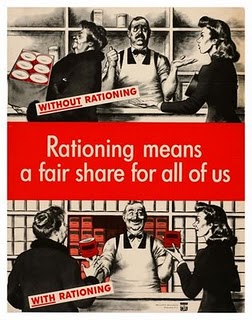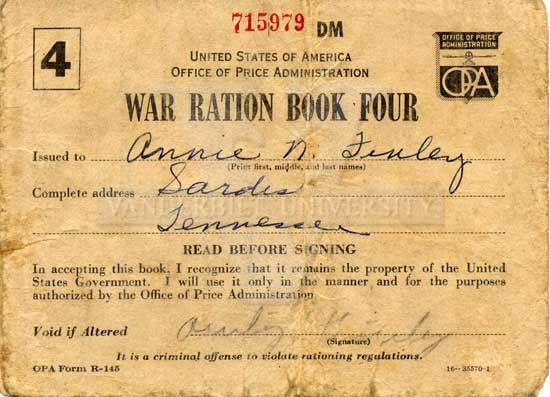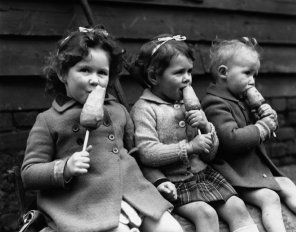

FOOD RATIONS
[Intro] [Task] [Process] [Evaluation] [Resources] [Food Rations] [Victory Gardens] [Knitting for Victory] [Women's Roles]
 |
 |
During World War 2, the United States government was sending mass amounts of food, gas, and clothing overseas to the war effort. That meant that back home, there was a major shortage. The government started telling Americans to ration food intake with the Food Rationing Program in 1942. The government wanted to make food intake fair so that the poor and the wealthy would all be cutting back food intake.
Research links:
http://www.u-s-history.com/pages/h1674.html
http://www.brighthub.com/education/k-12/articles/33634.aspx
http://www.ameshistoricalsociety.org/exhibits/events/rationing.htm
http://www.fortunecity.co.uk/meltingpot/oxford/330/ration/ratn1.html
http://plainshumanities.unl.edu/homefront/rationing?section=homefront
Fun Facts:
-Since sugar was part of food rations, there was no icing on birthday cakes.
-In 1942, children under the age of 5 got free cod liver oil
-Carrots were one of the few things that they had plenty of in war time so they were used in many recipies. In wartime, there was fear of blackouts, so people were told to eat carrots and they would help you to see in the dark. Read more and see photos about carrots during World War 2!

children eating "carrot sticks" instead of popsicles or lollipops.